One of the most influential films of our time, Stanley Kubrick’s The Shining has become a cultural cornerstone within not only the Horror community but also of accomplished filmmaking in general. Going for interesting over realistic, Kubrick directed and produced The Shining, released thirty-five years ago this week on May 23, 1980. Known for such superb films as 2001: A Space Odyssey (1968) and A Clockwork Orange (1971), the meticulous director was one to shoot some scenes dozens of times to get them the way he saw them in his head. While the screenplay was initially written by Diane Johnson (Le Divorce 2003), Kubrick typed pages of revisions, causing confusion across the set as to which lines were the ones being used for each scene. Although the movie is technically based on Stephen King’s novel of the same name, both King and Kubrick have said that the link between the two is tenebrous at best. Filmed between May 1978 and April 1979, the movie stars 1975’s One Who Flew Over the Cuckoo’s Nest most infamous madman, Jack Nicholson, the willowy Shelley Duvall (Popeye 1980, Time Bandits 1981), and child actor Danny Lloyd (Will: The Autobiography of G. Gordon Liddy 1982) as the doomed Torrance family, while Nicholson’s co-star from One Who Flew Over the Cuckoo’s Nest, Scatman Crothers, was called upon to play the Overlook’s cook and fellow shiner, Dick Halloran.
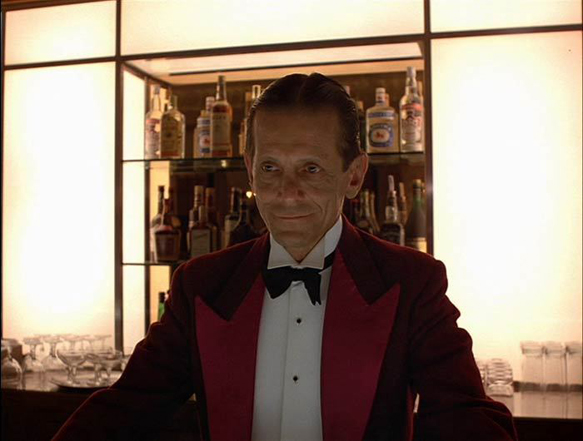
Kubrick’s brother-in-law, Jan Harlow, was the executive producer, while his wife, Christiane Kubrick, worked on set design, and his own daughter, the seventeen-year-old Vivian, has an uncredited part as Smoking Guest on Ballroom Couch and is also known for filming the informative, behind the scenes documentary, The Making of THE SHINING, which aired on BBC in 1980 and is included in the deluxe edition of the DVD. Later, she also composed the music for her father’s Full Metal Jacket (1987) under the pen name Abigail Mead and wrote an incomplete score for his film, Eyes Wide Shut (1999). Although most of the music used during the movie was pre-recorded Classical, the opening melody used while the family drove to the hotel and the brief bit during Halloran’s plane trip was composed by Rachel Elkind and Wendy Carlos. Carlos also composed the score for Kubrick’s A Clockwork Orange (1971) under the name Walter Carlos. The opening driving scene was shot in Glacier National Park in Montana while the interior shots were filmed at the Elstree Studios in Hertfordshire, England, a set that was designed to look like the Ahwahnee Hotel in Yosemite National Park, a fact not lost on future guests of the Californian hotel.
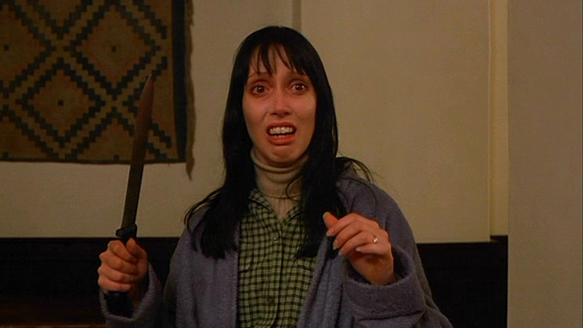
It is impossible to talk about The Shining without bringing up some of the innovative idiosyncrasies of famed director Stanley Kubrick. Self-taught and never allowing himself to be persuaded by the ideas of others in the industry, Kubrick’s noted genius in earlier works got him the attention of Hollywood, but it was not until he directed Kirk Douglas in Spartacus (1960) that the rest of the world began to notice the critically thinking filmmaker. Although he turned down the opportunity to direct The Exorcist (1973) because he would not be allowed to produce the film, this ground-breaking director had said he wanted to make the scariest film ever made. With the immensely talented, faultless, high-energy acting of Duvall and Nicholson combined with his unfailing, tireless crew, he accomplished this goal and more with The Shining.
Both Robin Williams and Robert De Niro were considered for the role of Jack Torrance, but De Niro was not considered to be crazy enough while Williams was thought to be too psychotic. Compared to King’s original character, Kubrick’s Jack was pretty much insane from the get-go, a story arc not lost on the famed Horror writer, who considers Jack’s descent into madness over time as one of the key elements of the novel. Although he never actually strikes Wendy or Danny throughout the entire film, Nicholson’s Jack Torrance became known as one of the scariest characters in movie history, named the 25th greatest villain on the AFI’s 100 Years… 100 Heroes and Villains list in 2003. The improvised line, “Heeeere’s Johnny!” was voted #68 in AFI’s Top 100 Movie Quotes list, while also grabbing #36 of “The 100 Greatest Movie Lines” by Premiere magazine in 2007.

Five-year-old Danny Lloyd was unaware that he had starred in such a surreal, off-kilter Horror movie. Kubrick had given him the impression that he was acting in a drama, going so far as to have Wendy carry a dummy in lieu of the boy in the scene where she screams at Jack in the Colorado Lounge, although the idea to make Tony talk through Daniel Anthony Torrance’s finger was completely his own. Kept in the dark, Lloyd did not watch the full, unedited version of The Shining until he was sixteen years old, eleven years after filming started. On the other hand, Shelley Duvall’s treatment by Kubrick is well known, as he even insisted that the rest of the crew withhold sympathy from her, giving her a hopeless edge that transferred perfectly onto the screen, although it resulted in her suffering from hair loss and nervous exhaustion during filming. Later, she admits that the end result of his constant harassment and bullying was better results than if he had left her to her own devices.
Released on Scatman Crothers’ seventieth birthday, the film version of King’s novel was quite different from the book, most notably in that Dick Halloran survives in print but is killed by Jack in the movie. Labeled by King as a “fancy car without an engine,” he cites not only Jack’s immediate psychosis but also the fact that Wendy was a passive mouse of a woman as story-altering enough to make the movie a beast of its own, contrasting with the book version where she was more of a strong cheerleader type who never had to deal with real problems. The topiary animals from the novel were replaced with the overwhelming hedge maze, but only because special effects for the time would have made the living bush animals too expensive to produce. Both the hotel scrapbook and the impending boiler explosion were the ultimate pitfalls of both Jack and the hotel in the book, yet they were barely mentioned in Kubrick’s version. The novel also implied that the hotel wanted Danny so it could use his shining to strengthen its own psychic prowess, while the movie’s version of The Overlook only wanted its caretaker back.
The movie has many surreal moments, including Wendy’s huge cigarette ash as she talks to the family doctor, changing patterns in the hotel’s rugs, off-kilter angles in doorways, the use of the color red in every scene, windows in what should be interior walls and Danny’s ride on his Big Wheel that brought him up a floor without ever climbing the stairs, all giving the movie a phantasmal feel that makes the viewer never quite sure if what they are seeing is supposed to be real or a dream. The effect is so unsettling because once one notices these things, they realize that they were there under their nose the entire time. The question of Jack’s sanity is asked as eagle-eyed viewers recognize that Jack’s conversations with ghosts only happen when he is facing a mirror, implying he is really only speaking to a hallucinated vision of himself – that is, until the larder door bolt is thrown open by the long-dead Grady, and the idea of a supernatural reason for Jack’s dementia becomes evident. Which Grady, you ask – Delbert, the 1920s butler, or Charles, the 1970s caretaker? Are they two men from two separate time periods with a coincidentally similar name or are they a single character manifestation from two totally different time periods? Or could it be a simple mistake in the scriptwriting process? Unfortunately, the world will never know, as Kubrick took the answers to these questions to the grave.
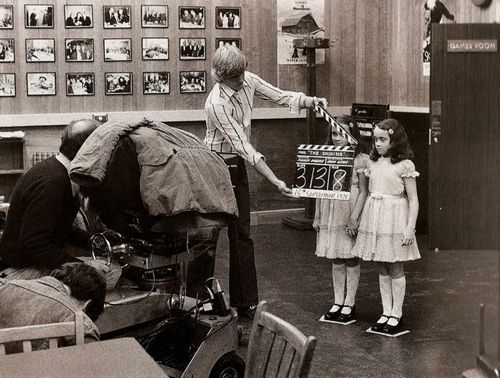
As mentioned above, filming The Shining was a long, arduous process. Complete sets filled every lot in Elstree Studios and were kept intact and lit so the movie could be filmed chronologically, taking close to a year to finish. The intense lighting needed to imply a bright, snowy day through the Overlook’s windows was so hot that the set caught on fire. Fortunately, the needed scenes for this film were already shot, but the set was rebuilt and later used by Steven Spielberg for the snake-filled Well of Lost Tombs in Raiders of the Lost Ark (1981). The freezing, wintery scenes in the hedge maze were also sweltering to film, so the cast would strip off their heavy, cold weather clothes in between takes of running through nine hundred pounds of salt and Styrofoam bits that the crew used for snow. Nicholson had to tirelessly bash his way through over sixty bathroom doors for three days straight to complete the “Here’s Johnny!” scene. Kubrick put in some extra overtime to pull one over on the MPAA censors. At the time, blood was not allowed to be shown in movie trailers, but the conniving director convinced the board that the red deluge coming out of the elevator during The Shining trailer was not actually blood, but rusty water, which was well worth the effort as the scene has become just as iconic as Nicholson’s face squashed into the hole in the bathroom door.

An alternate ending was shot for the film, but was removed by Kubrick one week after release. The scene took place after the shot of Jack’s frozen body in the maze and showed hotel supervisor Stuart Ullman visiting the surviving Torrance’s in Wendy’s hospital room, where he talked to a recovering Wendy and threw an unnervingly familiar yellow ball to Danny – the same one that mysteriously rolled into a hallway before Danny was attacked in room 237. As Ullman walked away, the scene dissolved to the move through the hotel corridors towards the photo. Feeling this brought the supernatural outside of the haunted hotel, Kubrick pulled the scene.

The Shining earned a total of almost forty million dollars in theatres in America alone, making it one of the most successful Horror films of 1980. Although original fan response was poor, with viewers expecting something closer to King’s novel, over time the movie has grown in Horror lover’s hearts, making it the ultimate cult classic and one of the best movies ever made. The film has garnered many accolades, including #29 on AFI’s 100 Years… 100 Thrills list in 2001, #5 on Total Film’s Greatest Horror Film list in 2004, #6 on Bravo’s 100 Scariest Movie Moments special in 2005, and the ninth scariest film of all time by Entertainment Weekly. In addition, film critics Kim Newman and Jonathan Romney both placed it in their all-time Top Ten lists for their Sight and Sound poll in 2002, while director Martin Scorsese put The Shining on his list of eleven scariest Horror films of all time.
Rotten Tomatoes gives the film a 92% fresh rating, while Roger Ebert included it in his series of Great Movie reviews, saying, “Stanley Kubrick’s cold and frightening The Shining challenges us to decide: Who is the reliable observer? Whose idea of events can we trust?”… “It is this elusive open-mindedness that makes Kubrick’s film so strangely disturbing.” Acknowledgements for the movie were numerous, with a Saturn Award going to Crothers for Best Supporting Actor, and three other Saturn nominations – Kubrick for Best Director, Bela Bartok for Best Music for his Classical composition “Music For Strings, Percussion and Celesta (Movement III)” and the movie itself for Best Horror Film, all in 1981. Yet no amount of illustrious commendations can give enough credit to Kubrick’s terrifying masterpiece. Whether taken as a straightforward leap into cabin fever-induced madness or as a deadly ghost story, The Shining is a chilling, brilliant success that leaves the watcher scrambling for crumbs of sense in a seemingly random bunch of fluid scenes, wondering if the true meaning behind the film had merely been overlooked.
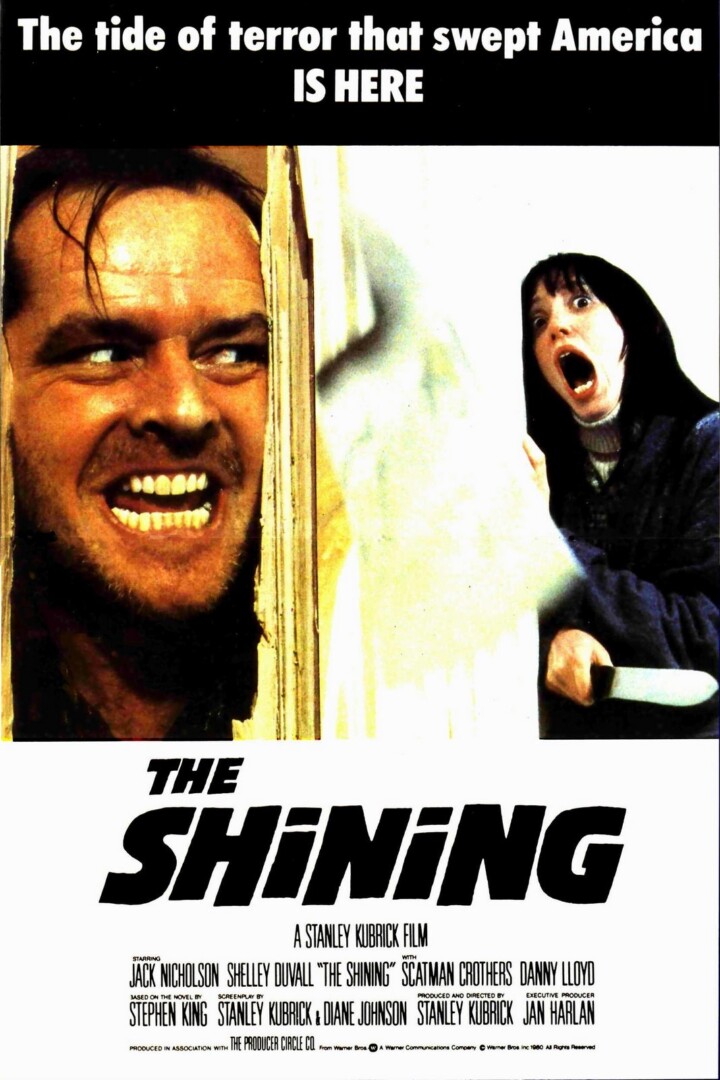

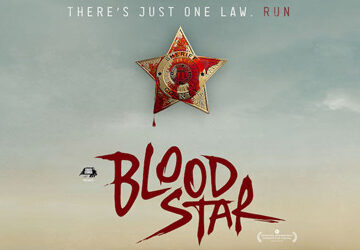
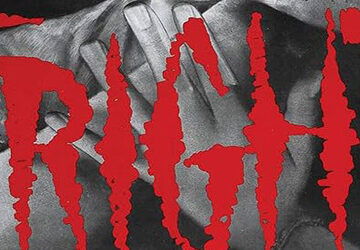


No comment